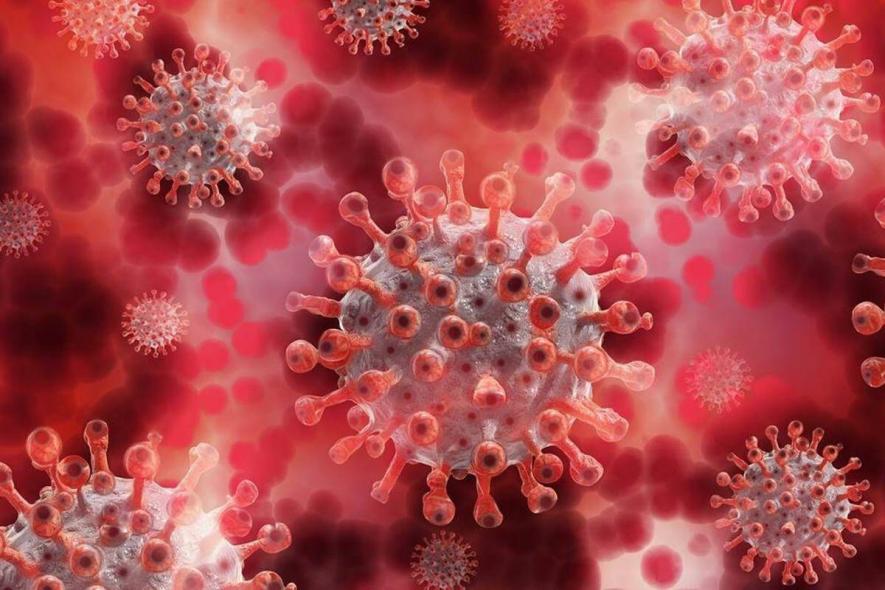Coronavirus Can Integrate Bits of its Genetic Material with Human Genome

Representational Image. Image Courtesy: The Financial Express
In some rare cases of COVID-19 infected people, it has been found that even after weeks or months, a recovered person can be tested positive for the novel coronavirus. An answer to the puzzling question of why this happens was that the SARS-CoV-2 virus can integrate bits of its genetic material into the human genome. This apparently was a controversial issue.
The study, which postulated this hypothesis, was led by Rudolf Jaenisch and Richard Young of the MIT (Massachusetts Institute of Technology), in the United States in December last year.
Now, in another publication in the PNAS (Proceedings of the National Academy of Sciences), that became available online recently, the team has doubled down on their hypothesis with more in-depth experimental results.
The process through which the virus can integrate its genetic material with parts of the human genome is called reverse transcription. To understand it, let us quickly go through the basics of the virus and how it infects human cells.
The SARS-CoV-2 is an RNA virus. This means that the virus has its genetic material in the form of an RNA (ribonucleic acid), whereas the genetic material of human is the DNA (Deoxy ribonucleic acid). The difference in character of these two genetic materials don’t allow them to integrate. However, if one can be changed into the other, the integration becomes possible.
The coronavirus attaches to human cells with the ACE2 receptor. The ACE (Angiotensin Converting Enzyme) 2 receptor is like an antenna on the outer membrane (surface) of the human cells. The virus does so with the help of its spike protein. After entering the human cell, the virus’s RNA is translated into viral proteins and the virus proliferates and concomitantly affects other cells.
The integration of the viral RNA to the human genome is possible by the process where the RNA is transformed into DNA; this process is known as reverse transcription. There is an enzyme in humans known as reverse transcriptase, which can cause the reverse transcription.
Notably, SARS-CoV-2 is not the only virus that can integrate into the human genome. In fact, there is a good portion of the human genome that has remnants of ancient viruses which integrated to the human genome in such a process. There exists a class of viruses known as the retrovirus which has to be integrated into the human genome to be replicated. SARS-CoV-2 is not a retrovirus, meaning it is not essential for the virus to be integrated into the human genome to get replicated.
The reverse transcriptase enzyme in human is encoded by LINE-1 elements. The LINE-1 elements are portions in our DNA. A protein is manufactured inside a cell based upon the code in the DNA. The code is nothing but a particular portion of the long DNA. Let me illustrate it in the following diagram—
Suppose a portion of the DNA is
--ATCGCGACTATACAGCAGCAGACGACGCATAGTAG--. Now, in it, suppose the first six letters signify the code for a particular protein. Remember, DNA is made up of four letters, A,T,C,G.
The LINE-1 element covers almost 17% of the human genomes. These genomes signify earlier ancient infections by retroviruses. The reverse transcriptase is encoded by the LINE-1 elements.
In the earlier paper (published in December last year), the team presented a test tube evidence where human cells were spiked with extra LINE-1 elements and were infected by SARS-CoV-2. The DNA portion of the virus (made from the viral RNA and reverse transcribed into DNA by the reverse transcriptase) got integrated into the genome.
In the new PNAS paper, they showed that the chimera of human-virus DNA happens in cell culture. They also showed that “portion of LINE-1 elements flanks the integrated viral genetic sequence”.
The team took samples from Covid-19 patients to look whether the viral integration was happening. They were able to calculate the genes in the samples of the patients, which contained viral sequences possibly derived from integration of the viral copies.
Get the latest reports & analysis with people's perspective on Protests, movements & deep analytical videos, discussions of the current affairs in your Telegram app. Subscribe to NewsClick's Telegram channel & get Real-Time updates on stories, as they get published on our website.























